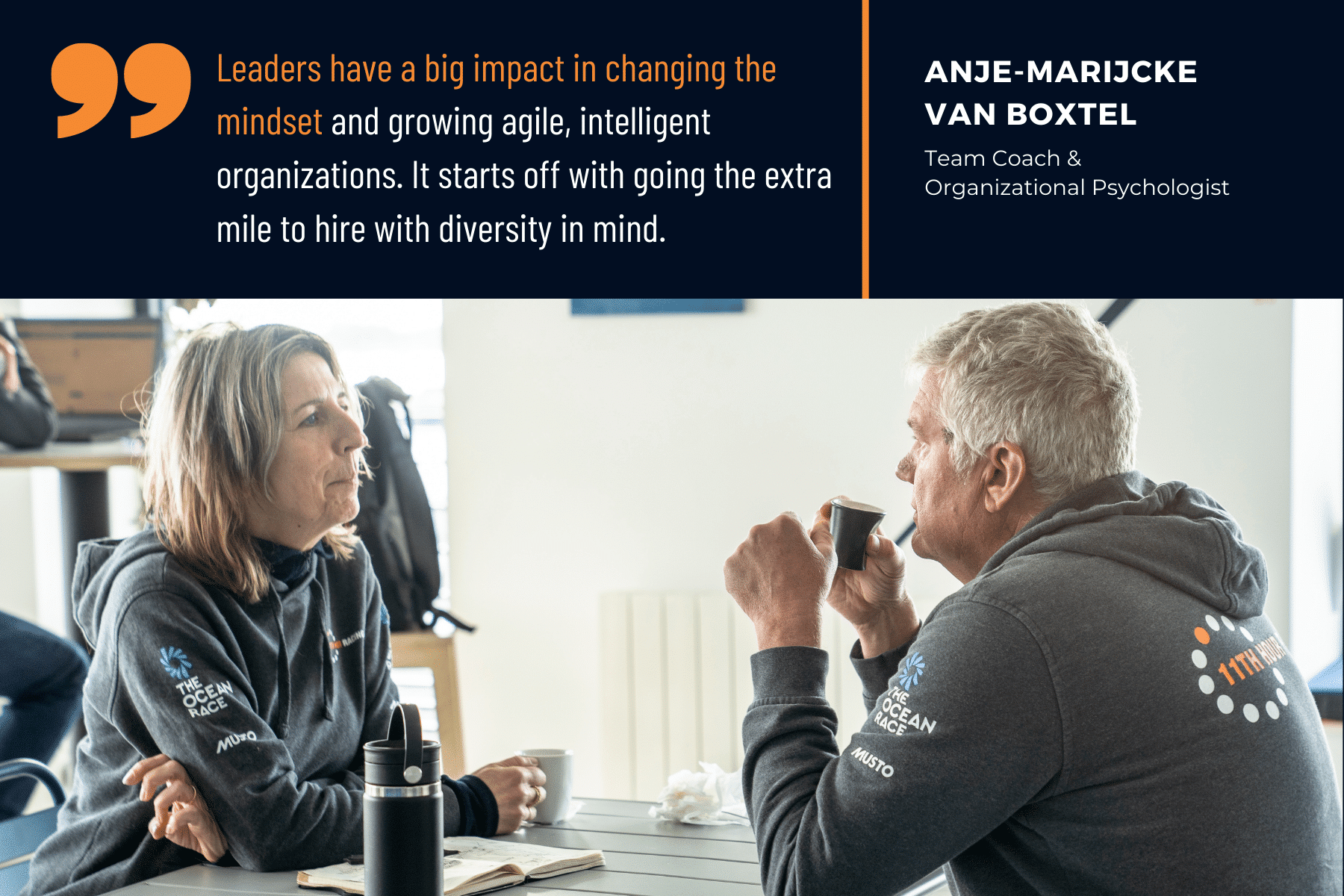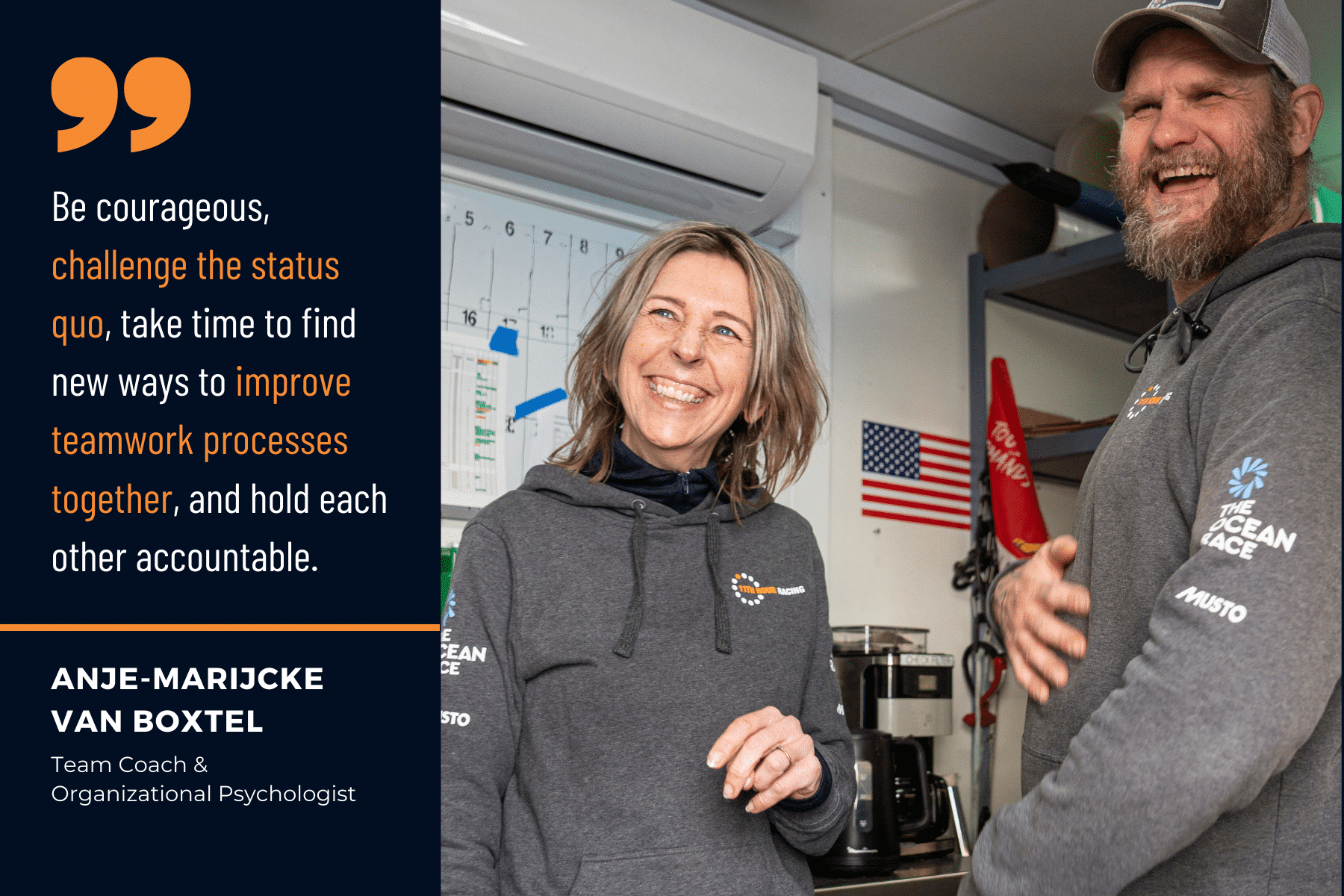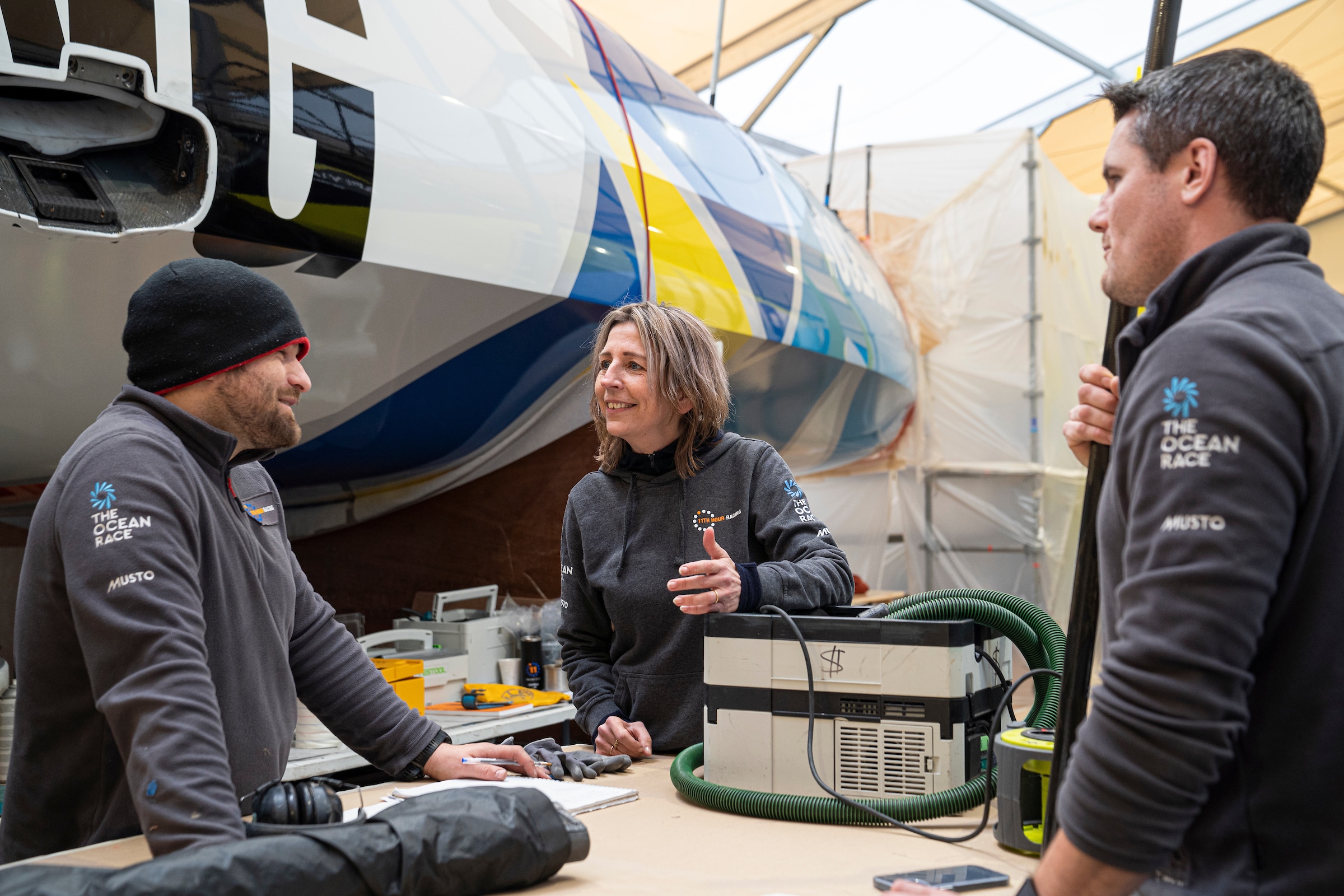The psychology of diversity in sailing teams
To celebrate International Women’s Day, we caught up with our Team Coach and organizational psychologist Anje-Marijcke Van Boxtel, from the Netherlands, to hear her vision on how diversity makes teams perform better.
Anje-Marijcke, it’s International Women’s Day on 8 March – what does the day mean to you?
Anje-Marijcke Van Boxtel: For me, International Women’s Day is a celebration of all things diversity and inclusion. But let’s dive into statistics first. I’ve been reading the World Sailing Trust’s Women in Sailing Strategic Review from 2019 and the statistics were definitely challenging.
80% of female sailors and 56% of male sailors say that gender balance is an issue in the sport, and 59% of women and 14% of men say they’ve experienced discrimination. Focus areas for improvement are participation, representation, perceptions, and racing politics; it’s really worth a read and clearly, there is a lot to win.
Statistics are great for grabbing headlines, but what do we actually do with the data, on the ground?
AMVB: Sharing statistics around inequality gives really valuable insight, but what is interesting is that increased awareness by itself doesn’t drive change. What does drive change is making sure that we not only own the problem but most importantly we own the opportunity. And for me, as a coach, that’s my working area.

What are the benefits you see from creating a more diverse workforce?
AMVB: What helps an organization to grow, in learning agility and performance, is not just hiring or recruiting a diverse staff. To make diversity work, to get the best out of each other in a diverse team, an inclusive team culture is required.
Working in diversity is difficult! We would all feel way more comfortable sailing the world in a team of clones, with people who think, decide and perceive challenges and solutions the same way as we do ourselves. When you’ve got a brain, you’ve got a bias …
And that is why, in diverse teams, we often find ourselves a way to work around diversity, to work parallel to each other, in silos, instead of really working together. Yes, it might be easier and faster in the short term, but it won’t deliver high performance in the long term. High performing organizations must grow inclusive team cultures to be successful.
How is an inclusive team culture important?
AMVB: When we create a safe environment in which people are challenged to speak up, to share different perspectives to co-create, we unlock the potential of diversity and a performance that is associated with diverse thinking. And we need that to be sustainably successful in our VUCA world.
VUCA-world? What does that mean?
AM: VUCA stands for “Volatility, Uncertainty, Complexity and Ambiguity”. It describes the situation of constant, unpredictable change in which Ocean Race teams, and most areas of the business world, work in. Thriving in such a challenging context requires creativity, agility, high quality decision-making and innovative solutions to complex problems. And those qualities are associated with diversity and inclusion.

So what does a successful and diverse team look like?
AMVB: Successful teams are able to hire and invite diversity to the table. Remember we are not talking just about gender diversity. The potential that demographic diversity (gender, age, ethnicity, etc.) brings is in experiential and cognitive diversity – a broad range of experience, knowledge, thinking patterns and behavioral styles brings a diversity of perspectives. Effective teams co-create.
To ‘break the bias’, a team’s designed alliance is about openness and speaking up, to share information and to welcome ideas or concerns about plans or decisions, even if it is difficult or sensitive to do. There is a positive attitude towards risk and failure in which they talk about mistakes and ways to learn from them. There’s a willingness to help and ask for help. And they take time to find new ways to constantly improve their teamwork processes.
What is essential to team members is that when we create a fearless team culture, when we hold each other accountable for effective behaviors, and strive for our common goal, we get the best out of ourselves and the best out of each other. And because leadership behavior is contagious, the very first thing to grow is leadership.

So what’s needed from the leaders of our sport?
AMVB: Leaders have a big impact in changing the mindset and growing agile, intelligent organizations. Again, it starts off with going the extra mile to hire with diversity in mind, by recruiting outside our ‘old mates’ network to create diverse teams.
The biggest challenge, and best results, are in displaying the effective behaviors we talked about. Walk the talk. Don’t tell your people how you want them to be, display those behaviors yourself. Be aware of your bias, value diversity and challenge the status quo.
Experiment, make mistakes, admit them and show your eagerness to learn while focusing on possibilities. Create accountability for individual and team behaviors. Encourage diversity of thought, be curious about others, modest about your own capabilities and invite contributions from others. Commit to the purpose and celebrate success. That’s how we drive sustainable change, and not just in the sailing world, of course, or sport in general, but also in business.
So your advice is that this change has to come from the leaders, because looking at sailing in particular, it is the men who are, predominantly, the leaders?
AMVB: In short, yes! One big recommendation around how we can change this inequality gap is by growing the current leaders and, in a fast-paced way, training more female leaders. They need to be supported to be present and impactful in the areas highlighted by the Sailing Strategic Review – participation, representation, perceptions and racing politics.
And again, it is about personal leadership too, an inclusive team culture is our collective responsibility.
So what’s your advice, for both men and women, who want to say something, but aren’t sure how to approach it?
AMVB: Walk the talk. If you witness the behavior, don’t laugh along, either out of nervousness or because you find it funny. Listen with the ears of others – how might it be taken by others, and by going along with it, how will it help your team to thrive?
Be courageous, challenge the status quo, take time to find new ways to improve teamwork processes together, and hold each other accountable. Don’t polarize – the harder you push, the more defensive the other side will be.

A lot for all of us to think about. Any final words?
AMVB: So back to International Women’s Day and why we are having this conversation. I think it is so important, particularly in this VUCA world, we need other perspectives than just ourselves, so we can be intelligent and agile, to be able to grow with steep learning curves as individuals, teams and organizations.
To navigate to our sustainable future, we need to build our team compass with our purpose, values and effective behaviors. And then grow these effective behaviors in collaboration with each other, learning alternative perspectives, really listening and being curious about other people. This is not a luxury, it’s a necessity for success. Let’s own the opportunity!




